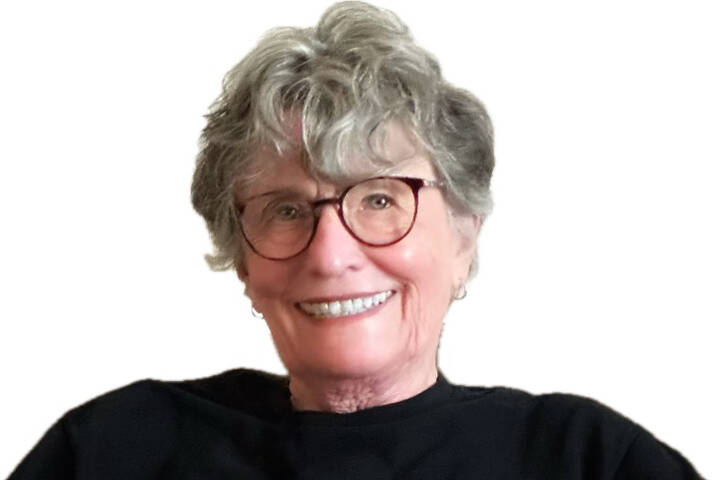I do not know how many of our community that receives health care through Olympic Medical Center (OMC) know it is a state designated public hospital district that was established in 1947 through community action to bring a hospital to our area.
The community took on responsibility for the development and administration through the election of a board of commissioners to hire the administrator and govern the hospital.
Public hospital district designation allows OMC to put levies before the community to supplement financial support for the hospital. The Board of Commissioners voted to put a levy before the community in our upcoming Aug. 6 primary election.
Your ballot will list the levy as Proposition 1.
The last levy run in 2008 was successful and resulted in a property tax of 31 cents on every $1,000 of property value. The current annual revenue from the tax is $4.9 million.
Proposition 1 asks the community to approve a 44 cents increase, or 75 cents on every $1,000 of property value, for an annual revenue increase of $7.1 million or total of $12 million from the tax.
As much as that seems, revenue from levies is a small although necessary part of the revenue. The annual budget for OMC is $269 million. Property tax revenue under this proposition represents about four percent of the budget.
Financial woes
OMC made the headlines more than it would like over the last year as it struggles to overcome the effects of the pandemic piled on its historically low Medicare reimbursement.
Darryl Wolfe, OMC’s CEO, has spent considerable time explaining huge losses ($24 million in 2023) and efforts to bring cost in line as well as lobbying for a respectable Medicare reimbursement.
OMC is in the peculiar position of being a comprehensive community medical center that supports the import of the many who have come to our area for retirement which in turns increases demands for OMC services. Many come early in their retirement years but turn Medicare age in a few years if not already a Medicare beneficiary.
Medicare covers 62% of OMC’s patients. About another 23% are covered by other government payers like Medicaid. All pay at a rate less than private insurance.
Although most of the reimbursement problem is on us older folks, there are services such as labor and delivery, a 24-hour, seven-day-a-week service that do not have the revenue to support the cost of maintaining the service.
OMC had 398 births in 2023, an average of about one a day if babies paid attention to averages. The volume does not cover the cost, but staff must be available every hour every day.
Emergency department is another 24-hour, seven-day-a-week service that must be fully staffed at all hours regardless of volume of patients.
OMC also absorbs the costs of charity care and debts that are uncollectable which they report cost the center $7,568,422 in 2023, an amount well over the amount received through property taxes.
We came to the Olympic Peninsula in 1998 when I accepted a position with the then named Olympic Memorial Hospital. I had the privilege of working in and with an administrative team to expand services such as oncology, cardiac services, and specialty physician services.
As outpatient services developed and expanded, revenue grew and helped carry some of the costs around issues of low Medicare reimbursement and charity care which existed then too.
Following the national trend of employing physicians when managing private practices became a challenge due the complexity of reimbursement, OMC employed physicians to retain the services in the community.
Then there was the pandemic.
Pandemic aftermath woes
We all remember the earth shook, and everything turned upside down for everyone the day the pandemic was announced and subsequent months following. It was even more so for health care providers and medical centers who rose to the occasion to care for the ill and keep services available for at least the medical necessary.
I cannot think of an industry that came out whole on the other side of the pandemic. All hospitals and outpatient medical services suffered staff losses; vacancies had to be filled to provide the services. It was as if everyone was thrown in the air and landed somewhere else.
OMC competed and struggled to bring staff on, often using travelers, trained staff who functioned as temporary workers at an inflated cost. Some services had to be limited or delayed.
Much of OMC’s loss is related to the cost of using expensive temporary staff.
Happily, the work OMC put into hiring staff is paying off and the loss for 2024 is projected at $1.2 million.
The business and hope of OMC
Anyone in business knows that a business that just breaks even is not healthy. OMC needs financial cushion for challenging times and for investments in newer more effective technology.
OMC needs to retain skilled personnel and pay employees for the value they provide at a competitive rate.
OMC needs to keep up with inflationary trends.
OMC is telling us they need your vote to approve proposition 1 because it will “support the viability of 24-7-365 operations” and “help keep critically needed services local.”
“Support viability,” “keep … local” are powerful words for the delivery of future services should the trends continue and proposition 1 as one of the strategies fails. It will be that much harder to do.
OMC, Hospital District #2 Clallam County is a community based and governed medical center. Its success and failures are not just theirs; they are ours.
We cannot afford to ignore the Aug. 6 primary ballot. We need to vote for candidates of our choice and proposition 1 for the medical center of our choice.
Bertha Cooper, an award-winning featured columnist with the Sequim Gazette, spent her career years in health care administration, program development and consultation and is the author of the award-winning “Women, We’re Only Old Once.” Cooper and her husband have lived in Sequim more than 25 years. Reach her at columnists@sequimgazette.com.



